Garden-Exploring
Feel free to use our provided tablet at the starting point for walking around in the garden.
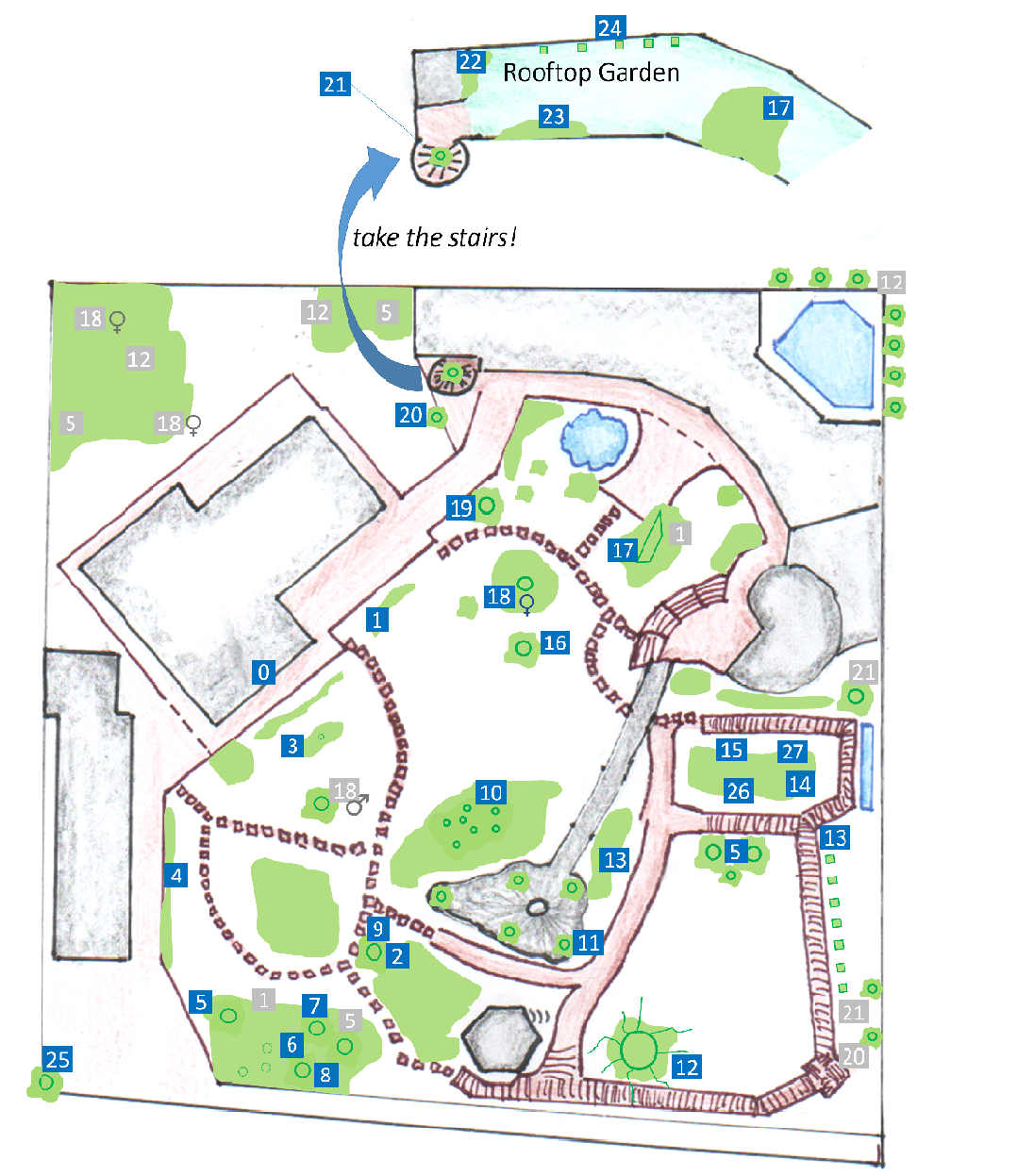
0) starting point / titik awal
There are a lot of small animals in a tropical garden. So we recommend, to spray on insect repellent before starting the tour. You can individually choose, which plants you want to read more about, just click on the numbers. Enjoy it! And if you should have any further questions or technical problems, just ask our staff. They are glad to help you.
1) hibiscus / bunga sepatu / hibiscus
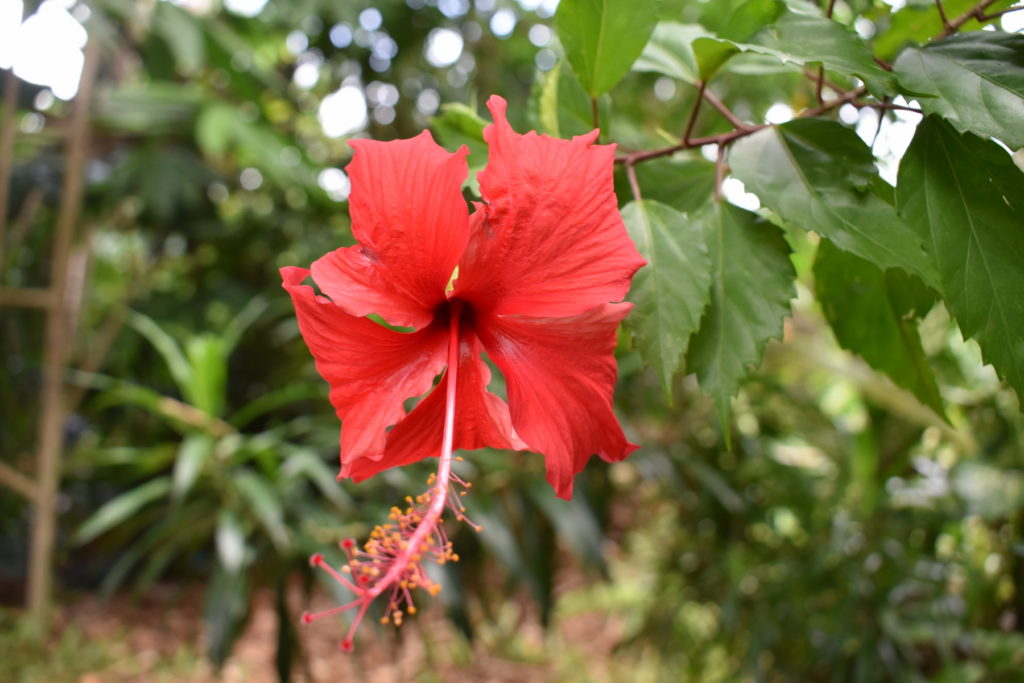
The genus is quite large, comprising several hundred species that are native to warm-temperate, subtropical and tropical regions throughout the world.
3) bird of paradise flower / bunga burung surga / strelitzia reginae
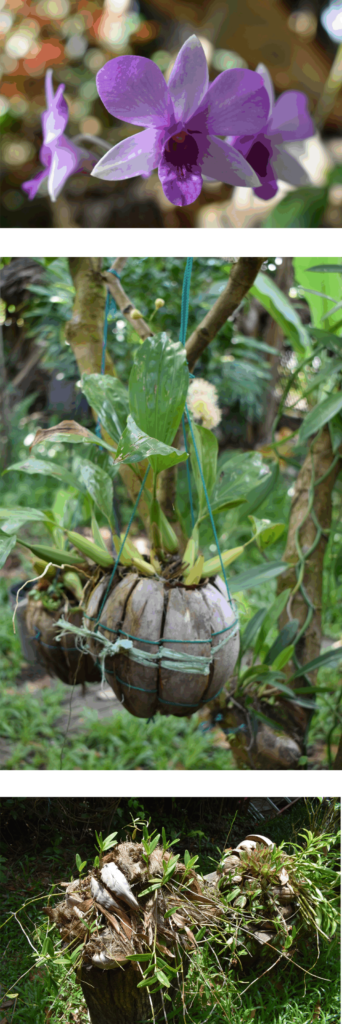
This plant is originally from Africa. The name comes from the similarity of the flowers to the bird. They are pollinated by sunbirds, which use the spathe as a perch when visiting the flowers.
4) jasmine / melati / jasminum officinale

The essential oil of Jasminum officinale is used in aromatherapy. Jasmine absolute is known as the 'King of Oils', and its heavy, sweet scent is loved by most people. The flowers release their perfume at dusk, so flowers are picked at night and a tiny amount of oil is obtained by solvent extraction.
10) bamboo / bamboo / bambusoideae

Bamboo is growing very fast. It is not a tree, it is a grass. Bamboo is often used for construction and scaffolding due to his vertical stability at low weight. Our treehouse contains also a lot of bamboo constructions.
Bamboo shoots are an important vegetable. If you want to try it here in Indonesia, ask for “rebung”.
11) acacia / akasia / acacia mangium/auriculiflormis
This tree grows between to 15–30 m tall, with a trunk up to 12 m long. The Roots are shallow and spreading. At a certain height the trees become unstable and usually fall over. Our ones here are stabilized by the construction with the tree house, no worries!
13) orchids / angrek / orchidaceae

There are many orchids in this garden. But there are existing also a lot of different sorts. Some of them are very small and others are as big as a hand and some bloom only once every 5 to 7 years, while others have never flourished. Some bloom just during one day, other blossoms are such small, you can hardly see it.
If you want specific information about this awesome flowers, don’t hesitate to ask our specialist, Beatrice.
13) orchids / angrek / orchidaceae

There are many orchids in this garden. But there are existing also a lot of different sorts. Some of them are very small and others are as big as a hand and some bloom only once every 5 to 7 years, while others have never flourished. Some bloom just during one day, other blossoms are such small, you can hardly see it.
If you want specific information about this awesome flowers, don’t hesitate to ask our specialist, Beatrice.
14) salak / salak / salacca zalacca

The fruit of this palm is also known as snake fruit. If you see the shell, you know why.
15) black pepper / lada / piper nigrum
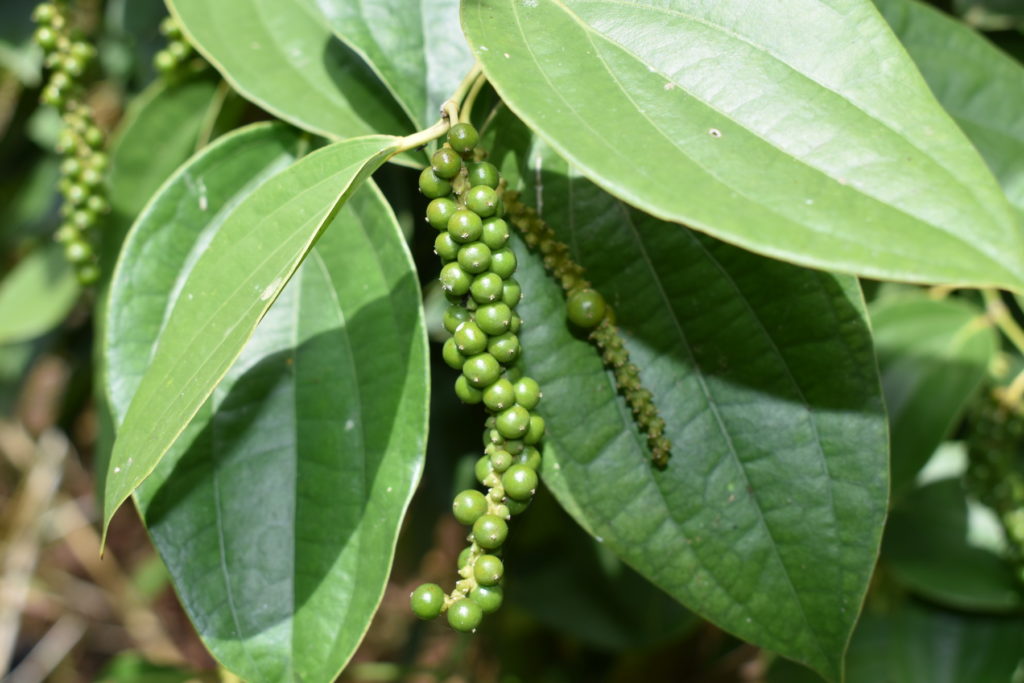
Did you know that white pepper is also from the black pepper plant? The difference is the time of harvest. Black pepper is produced by picking the fruits while they are still green. On the other hand, white pepper is produced by picking ripened fruits. Also green pepper is from this plant. It is the fresh, green unripe peppercorn, not dried. Pepper was an important export good in the history of Indonesia. In the years before the World War II Indonesia produced 80% of the world’s pepper. Today Indonesia produces ca. 20% of the worldwide pepper needs.
16) laurel / daun salam / laurus nobilis

For sure, you know laurel from dishes. This leafs here are bigger than the common leafs in the European cuisine.
17) cashew / jambu mente / anacardium occidentale

Here you can see, why cashew nuts are such expensive to buy. One fruit has just one nut. Handwork is required to remove the shell. The fruit can also be eaten when it is ripe.
17) cashew / jambu mente / anacardium occidentale

Here you can see, why cashew nuts are such expensive to buy. One fruit has just one nut. Handwork is required to remove the shell. The fruit can also be eaten when it is ripe.
18) rambutan / rambutan / nephelium lapaceum
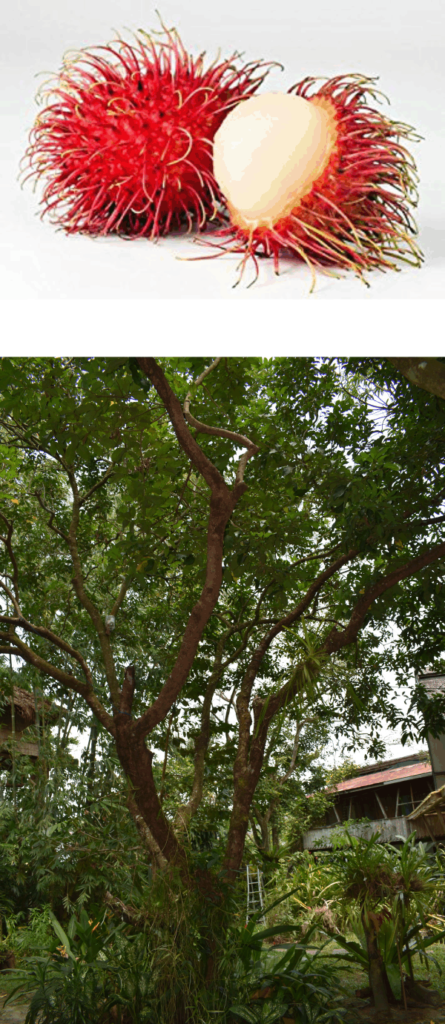
Rambut means in the Indonesian language „hair“. So this tree is named after the appearance of its fruit.
This fruits are very delicious, similar to lychee.
5) banana / pisang / musa
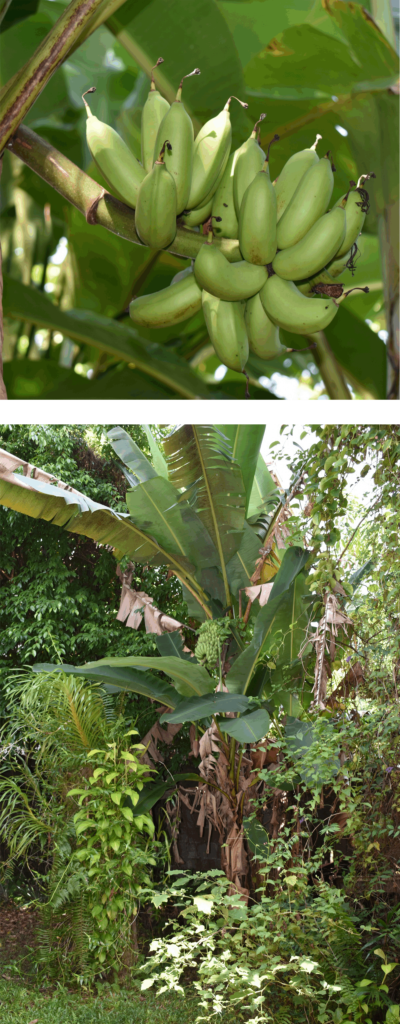
“The banana” does not exist. You can classifie the bananas in the sweet “fruit banana” and the one for cooking, vegetable banana, used for example in curry dishes. Here in the city you can buy fried bananas “pisang goreng” on the street. Banana leafs are used in many different ways, for example as plate.
19) mango / mangga / mangifera indica
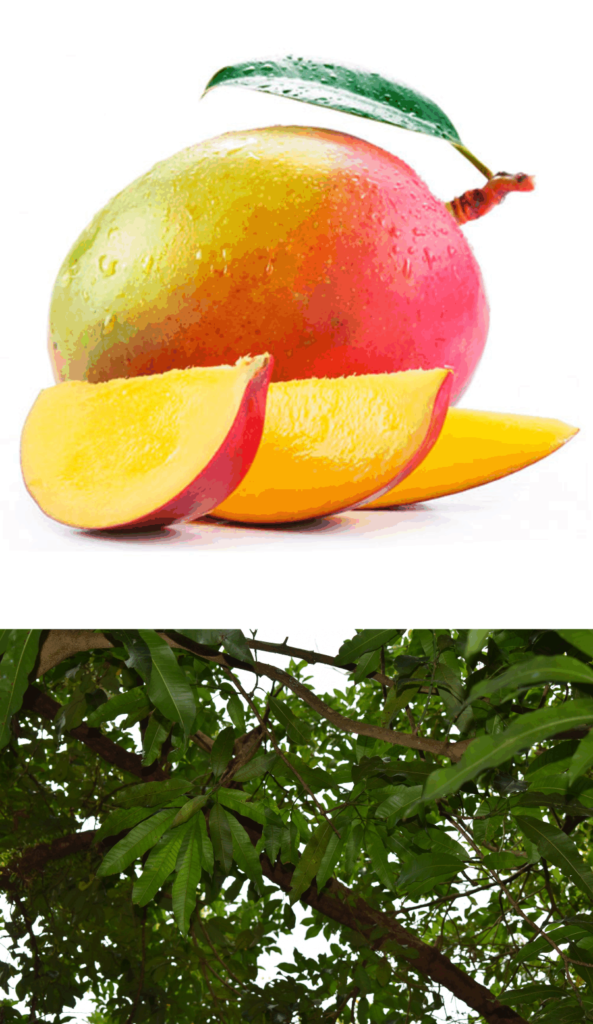
There are over 1000 cultured mango varieties. The native varieties are fibrous and sour. Extracts of the bark, leaves, stems, and unripe fruits have demonstrated antibiotic properties in vitro, and are used in traditional medicine.
20) areca palm / pohon pinang / areca catechu
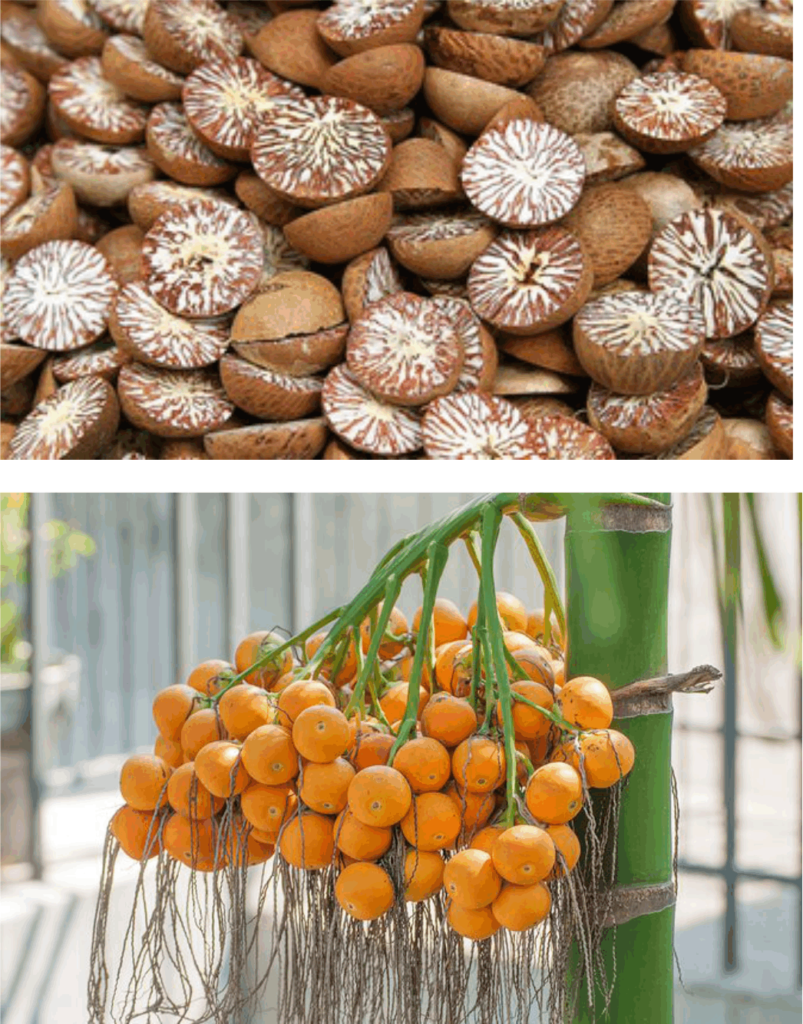
The areca nut is also called betel nut. But in fact it is not a nut, it’s a hard berry.
Chewing the mixture of areca nut and betel leaf is a tradition of the Dayaks, the indigenous people here in Kalimantan. This has an intoxicating effect.
21) coconut palm / pohon kelapa / cocos nucifera
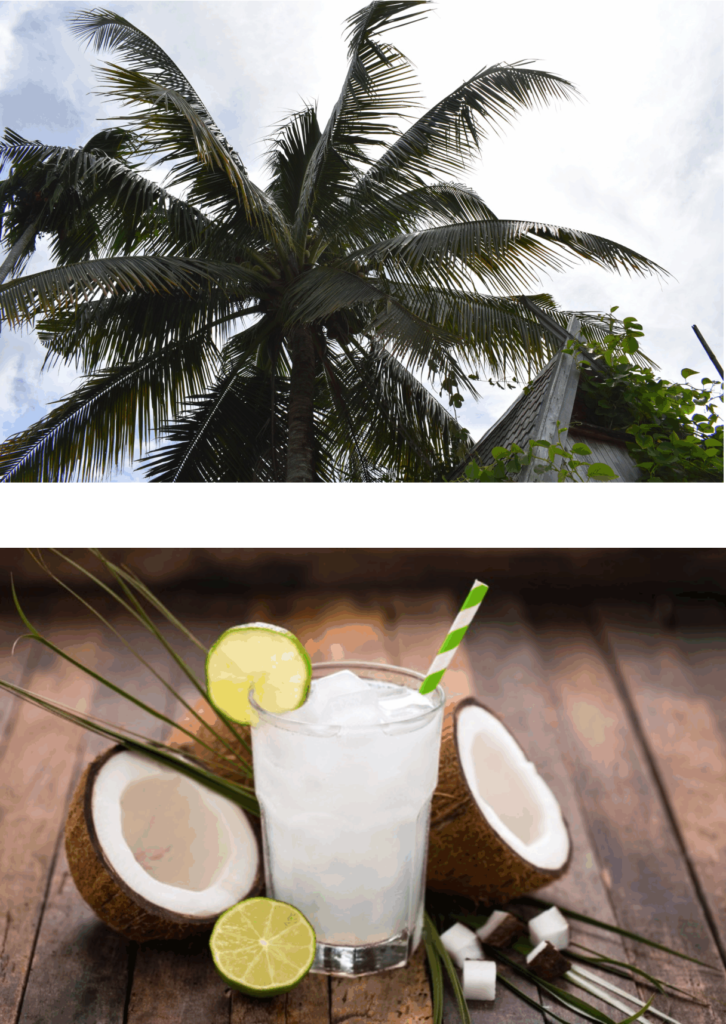
Did you know, that a lot of coconut-farmers are using trained monkeys to harvest the nuts? The smart animals are more productive than humans.
Try: If you have the opportunity, you should definitely try a drink of a young nut including some pulp, called “Air kelapa”.
22) passion fruit / markisa / passiflora flavicarva
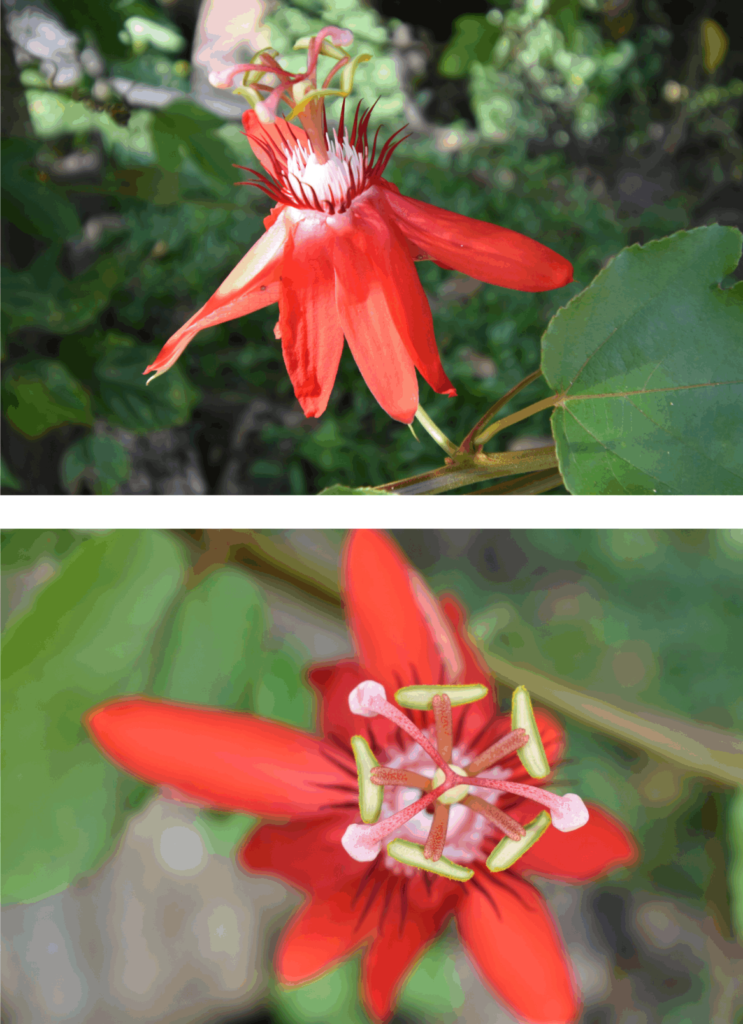
The fruit comes originally from brazil. In the 17 century missionars have given her the name, because they were reminded of the passion of Christ by the shape of the blossom.
23) cinnamon / kayu manis / cinnamomum aromaticum or cassia

Activity: Feel free, to rub on a leaf. It smells good, doesn’t?
24) roses / mawar / rosa

Yes, you are right: This roses are not native in Borneo. But aren’t they nice?
25) indian-almond / ketapang / terminalia catappa
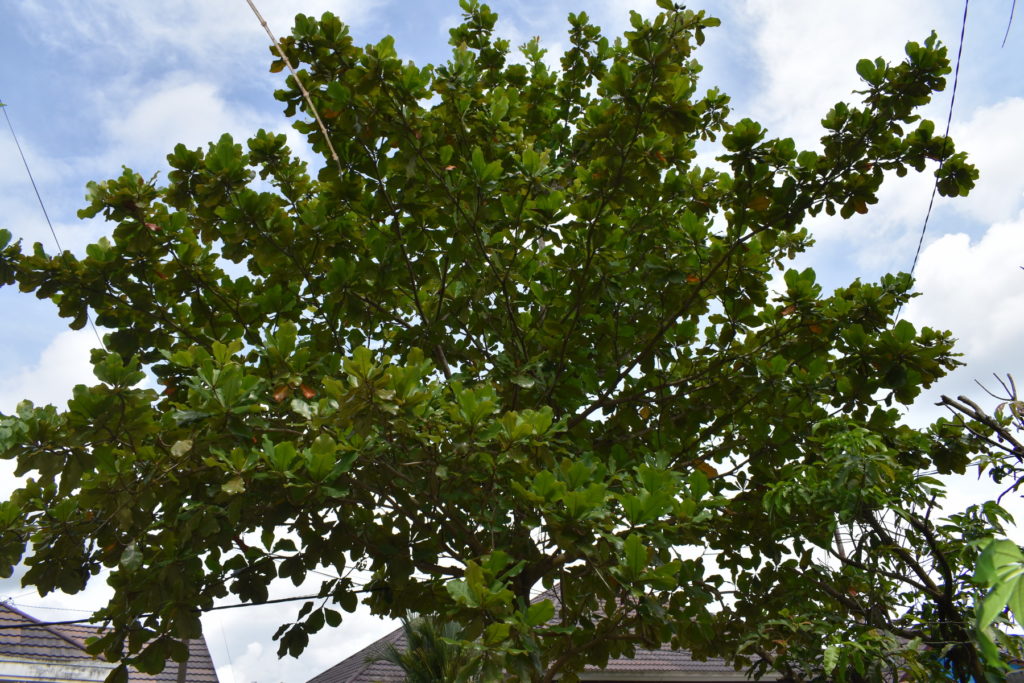
It is not certain, from where this tree originally comes. It is often planted by humans in hot regions, because his leafs spend a lot of shadow.
1) hibiscus / bunga sepatu / hibiscus

The genus is quite large, comprising several hundred species that are native to warm-temperate, subtropical and tropical regions throughout the world.
1) hibiscus / bunga sepatu / hibiscus

The genus is quite large, comprising several hundred species that are native to warm-temperate, subtropical and tropical regions throughout the world.
5) banana / pisang / musa

“The banana” does not exist. You can classified the bananas in the sweet “fruit banana” and the one for cooking, vegetable banana, used for example in curry dishes. Here in the city you can buy fried bananas “pisang goreng” on the street. Banana leafs are used in many different ways, for example as plate.
27) job’s tears / jelei / coix lacryma-jobi

Millet species, which is not edible, you may make chains out of this
26) tropical pitcher plant / kantong semar / nepenthes

In Indonesian called "big belly", carnivorous plant
2) rubbertree / pohon karet / hevea brasiliensis

Natural rubber is gained by this trees. There are a lot of rubber-tree-plantations in Indonesia. When the trees have an age of 5-7 years, you can begin to take the rubber-milk from it. The bark must be cut in the correct depth at the right angle. If you do it right, the tree lives for 25-30 years.
9) borneo ironwood / ulin / eusideroxylon zwageri

Have you already crossed a wooden bridge here in Kalimantan? For sure, it is built from ironwood. Theses strong material lasts a very long time. Due to the excellent resistance to bacterial, fungal, insect and marine borer attack the wood is highly prized for many outdoor uses. It contains a lot of yellow acid. That’s the reason why every steel nail in it rusts. So, the boards of the bridge may be loose, but no worries. It holds.
8) bougainvillea / bugenvil / bouganville glabra
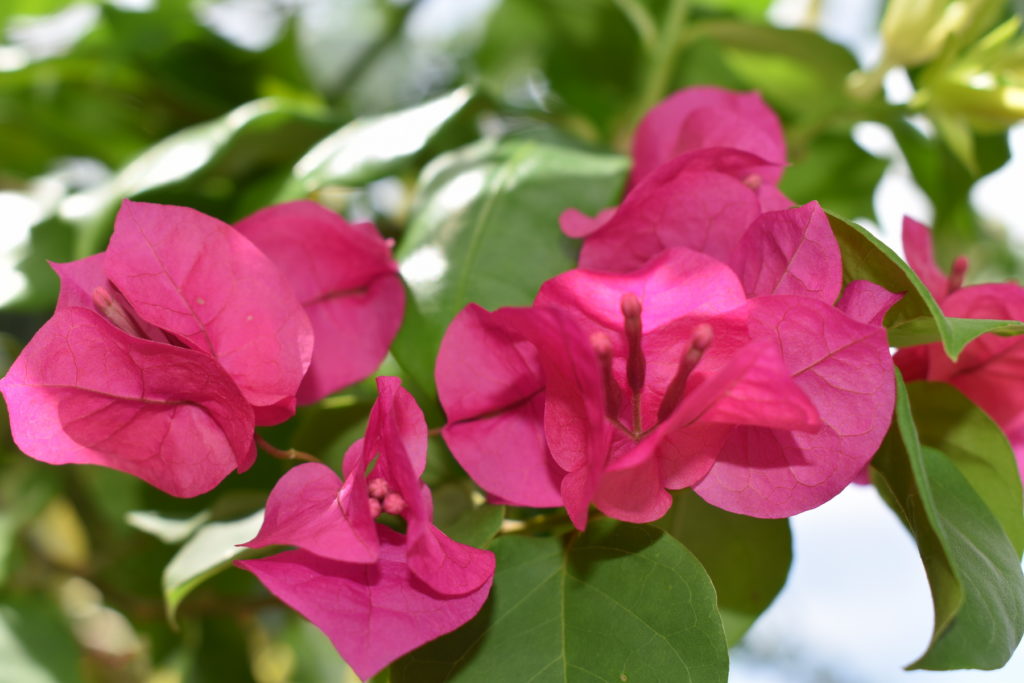
This plant with its decorative flowers are popular ornamental plants.
7) water apple / jambuair / syzygium malaccense

On this tree a vanilla (vanilla planifolia) is growing. Although it is native to Mexico, it is now widely grown throughout the tropics. Indonesia and Madagascar are the world's largest producers. The plant belongs to the orchid family. The tree, this one is growing on it as a half epiphyte, is the water-apple-tree. His fruits are edible.
6) sago palm / rumbia / metroxylon sagu

A traditional Dayak (indigenous people in Kalimantan) food is made from the marrow of this palm. Therefore you have to cut down the palm before it’s getting to blossom. Because after the palm has flourished one time, it dies slowly. After you’ve cut it down, you can gain starch from the centre of the tribe. The second option for producing food with the sago palm is to collect the larva, which also likes the starch inside.
5) banana / pisang / musa

“The banana” does not exist. You can classified the bananas in the sweet “fruit banana” and the one for cooking, vegetable banana, used for example in curry dishes. Here in the city you can buy fried bananas “pisang goreng” on the street. Banana leafs are used in many different ways, for example as plate.
12) weeping fig / beringin / ficus benjamina
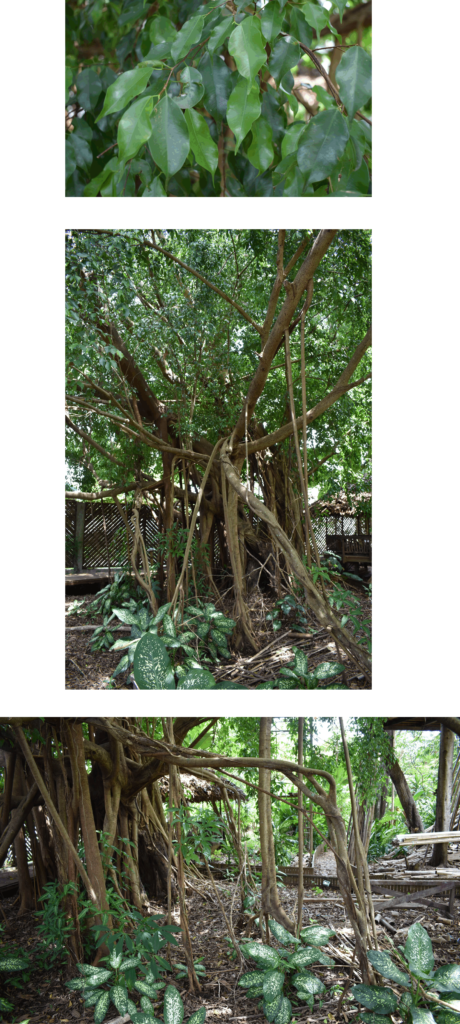
In Europe known as houseplant this one is grown much bigger. We recommend that you take a moment and marvel at the roots. The traditional Indonesian Religion, says, that in this tree lives ghosts. But also in the Indonesian-Bible we can find this tree. (Isaiah 6,13)
21) coconut palm / pohon kelapa / cocos nucifera

Did you know, that a lot of coconut-farmers are using trained monkeys to harvest the nuts? The smart animals are more productive than humans.
Try: If you have the opportunity, you should definitely try a drink of a young nut including some pulp, called “Air kelapa”.
21) coconut palm / pohon kelapa / cocos nucifera

Did you know, that a lot of coconut-farmers are using trained monkeys to harvest the nuts? The smart animals are more productive than humans.
Try: If you have the opportunity, you should definitely try a drink of a young nut including some pulp, called “Air kelapa”.
20) areca palm / pohon pinang / areca catechu

The areca nut is also called betel nut. But in fact it is not a nut, it’s a hard berry.
Chewing the mixture of areca nut and betel leaf is a tradition of the Dayaks, the indigenous people here in Kalimantan. This has an intoxicating effect.
12) weeping fig / beringin / ficus benjamina

In Europe known as houseplant this one is grown much bigger. We recommend that you take a moment and marvel at the roots. The traditional Indonesian Religion, says, that in this tree lives ghosts. But also in the Indonesian-Bible we can find this tree. (Isaiah 6,13)
18) rambutan / rambutan / nephelium lapaceum

Rambut means in the Indonesian language „hair“. So this tree is named after the appearance of his fruit.
This fruits are very delicious, similar to lychee.
18) rambutan / rambutan / nephelium lapaceum

Rambut means in the Indonesian language „hair“. So this tree is named after the appearance of its fruit.
This fruits are very delicious, similar to lychee.
18) rambutan / rambutan / nephelium lapaceum

Rambut means in the Indonesian language „hair“. So this tree is named after the appearance of his fruit.
This fruits are very delicious, similar to lychee.
12) weeping fig / beringin / ficus benjamina

In Europe known as houseplant this one is grown much bigger. We recommend that you take a moment and marvel at the roots. The traditional Indonesian Religion, says, that in this tree lives ghosts. But also in the Indonesian-Bible we can find this tree. (Isaiah 6,13)
5) banana / pisang / musa

“The banana” does not exist. You can classified the bananas in the sweet “fruit banana” and the one for cooking, vegetable banana, used for example in curry dishes. Here in the city you can buy fried bananas “pisang goreng” on the street. Banana leafs are used in many different ways, for example as plate.
5) banana / pisang / musa

“The banana” does not exist. You can classified the bananas in the sweet “fruit banana” and the one for cooking, vegetable banana, used for example in curry dishes. Here in the city you can buy fried bananas “pisang goreng” on the street. Banana leafs are used in many different ways, for example as plate.
18) rambutan / rambutan / nephelium lapaceum

Rambut means in the Indonesian language „hair“. So this tree is named after the appearance of its fruit.
This fruits are very delicious, similar to lychee.
5) banana / pisang / musa

“The banana” does not exist. You can classified the bananas in the sweet “fruit banana” and the one for cooking, vegetable banana, used for example in curry dishes. Here in the city you can buy fried bananas “pisang goreng” on the street. Banana leafs are used in many different ways, for example as plate.
12) weeping fig / beringin / ficus benjamina

In Europe known as houseplant this one is grown much bigger. We recommend that you take a moment and marvel at the roots. The traditional Indonesian Religion, says, that in this tree lives ghosts. But also in the Indonesian-Bible we can find this tree. (Isaiah 6,13)
20) areca palm / pohon pinang / areca catechu

The areca nut is also called betel nut. But in fact it is not a nut, it’s a hard berry.
Chewing the mixture of areca nut and betel leaf is a tradition of the Dayaks, the indigenous people here in Kalimantan. This has an intoxicating effect.
21) coconut palm / pohon kelapa / cocos nucifera

Did you know, that a lot of coconut-farmers are using trained monkeys to harvest the nuts? The smart animals are more productive than humans.
Try: If you have the opportunity, you should definitely try a drink of a young nut including some pulp, called “Air kelapa”.
Our guesthouse is surrounded by a tropical garden. If you are interested in what is growing, blooming and smelling, don’t’ hesitate to walk around and explore the different trees and plants. Just klick on the numbers on the map, to see more details about the plants. If you want to do a whole tour, start by number 0 and then follow the numbers in the garden.